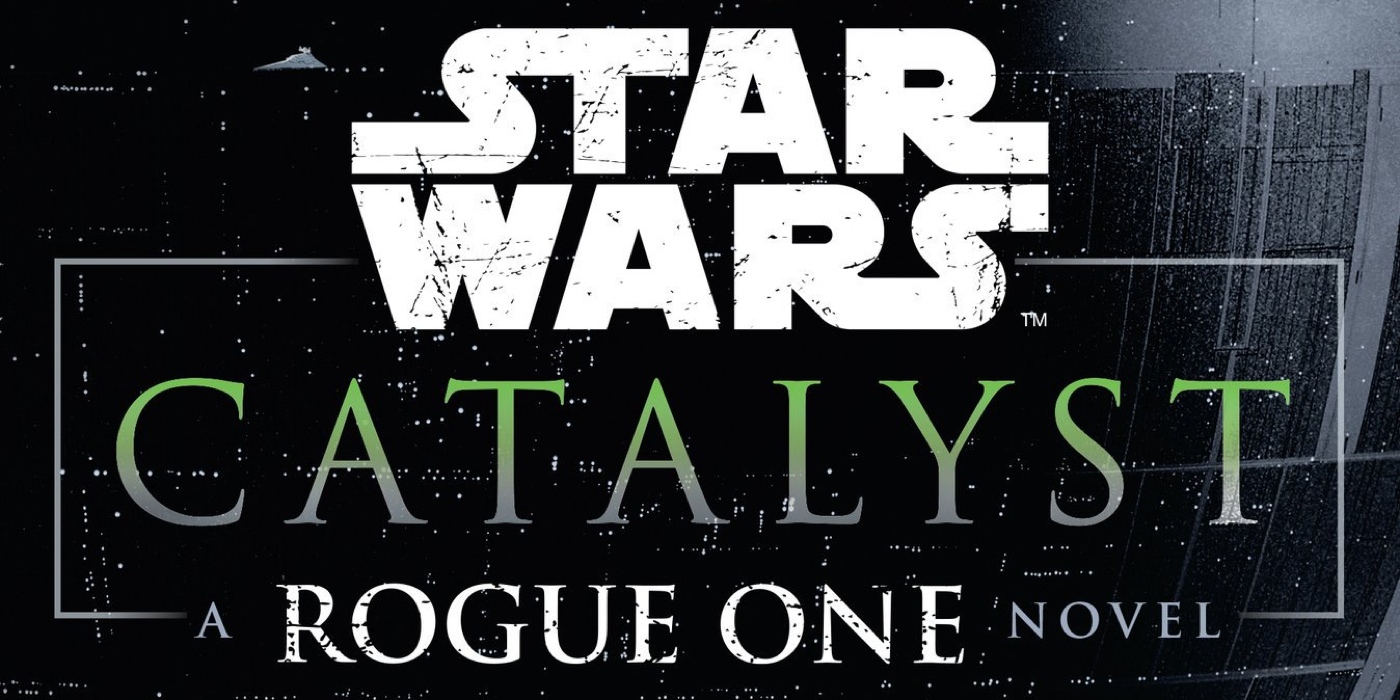
This review will contain mild spoilers.
Star Wars: Catalyst is the new book out from Lucasfilm and Del Rey and it’s the prequel to the hotly anticipated film Rogue One: A Star Wars Story. Written by Star Wars alum James Luceno, it tells the story of the rising tensions in the relationship between Orson Krennic and Galen Erso, against the backdrop of the arms race to build the first dreaded Death Star.
These are characters that we will, presumably, be meeting more of in Rogue One, as Erso is played by Mads Mikkelson and is the father of the lead, Jyn Erso (Felicity Jones.) Krennic, the Imperial baddie, is played in the film by Ben Mendelsohn. And since this book spans such a vast array of time (as does the film, if the trailers are any indication), we’re definitely offered a deeper window into the characters than I would have expected.
That’s the thing that’s so fascinating about this book to me. Although it could almost be taken as a history text for the construction of the Death Star and the development of the super-laser, Luceno never loses sight of the characters that are going to make this story interesting. The book begins during the Clone Wars, as any story delving into the creation of the Empire’s planet-destroying superweapon might. This fact actually took me by surprise, as a substantial portion of the novel is set during this era. We learn about Galen Erso and his desire to use clean energy to power the galaxy affordably, hoping to stay neutral in the war and help everyone equally.
And what does Galen feel is the key to this power?
Kyber crystals.
Krennic is the only one who seems to realize that Erso’s research could lead to the development of the superweapon, that it’s the answer the Empire is looking for, even if it doesn’t know it yet. He sees the Erso’s as his ticket to getting in on the front row with Palpatine and makes many deals with Mas Amedda to make sure that it can happen.
One thing I love about this book is that you can see the politics at play. You can see people, Erso himself, blind to the reality of the politics because of his own inherent biases, and he can’t see how he’s being used by a blindly ambitious man. The interplay between the characters is perfect and their opinions are arrived at logically. The entire book is a philosophical game of cat and mouse, with Krennic doing his best to push Erso closer and closer to building the superweapon, one step at a time.
Luceno’s prose is excellent, his descriptions of the worlds and places we see are vivid. And the connections between the rest of the saga are so well-done that I want to applaud him.
In fact, I wonder if you’d enjoy this book half as much if you’re not steeped in The Clone Wars. There are questions I’ve had lingering from the show that have never been answered until now. One of the biggest dangling questions? How Poggle the Lesser was held captive of the Republic during the war, but was present on Mustafar when Darth Vader assassinated all of the Separatist Leaders. The answer was, perhaps, my favorite moment in the book and left so much egg on Krennic’s face I was laughing out loud.
More than anything, I loved learning more and more about the Kyber crystals, though Expanded Universe purists might have reason to gripe. In the Ahsoka novel, we learned that Kyber crystals could “bleed” and that’s why the dark side is known to use red sabers. Some Legends fans preferred the explanation that the crystals the dark siders used were synthetic, but this book proton torpedoes that theory right in the thermal exhaust port, as Erso has been trying to work with synthetic crystals for a long time, but they just won’t do the job. Why? Because Kyber crystals are living things.
Another surprising touchstone to both The Clone Wars and Rogue One was the inclusion of Saw Gerrera, and I’m interested to see how this history will play out on screen.
Overall, I would say this book is a must-read for those thirsty for more information about Rogue One. It lays the groundwork for a number of important character relationships for the film, explains the context we want to know to better understand the construction of the Death Star, and is just an entertaining book to boot. It’s also emotional. As soon as I finished reading the book, I went to re-watch the final trailer of the film and found a lump in my throat when I saw that moment with the rainy stand-off between Erso and Krennic. It’s such a beautiful moment in the trailer visually, and this book enhanced my enjoyment of it ten-fold. (We also learn that the planet we’re seeing there might very well be called Lah’mu…)
For those who are constantly devouring new details about the Star Wars universe, this book is an entertaining smorgasbord, and it might be my favorite of Luceno’s, right behind Plaugeis. I’m giving it an 8.5 out of 10.
I would love to revisit it after I watch Rogue One and see exactly how the film shades my opinion of the book.
Look for more in-depth discussion on an upcoming episode of the Full of Sith podcast.